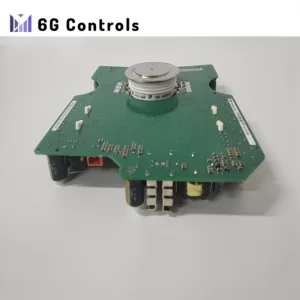Making Informed Choices in Power Electronics: Navigating ABB IGCTs and IGBTs

Introduction:
As an Industrial Automation Engineer, navigating the ever-evolving landscape of power electronics is a constant challenge. ABB, a stalwart in the industry, offers two prominent technologies – IGCTs and IGBTs. Each possesses distinct advantages and weaknesses, demanding a careful consideration of application requirements.
IGCTs: Unveiling High-Power Prowess
In the realm of high voltage and current applications, ABB’s IGCTs emerge as formidable players. With capabilities tailored for tasks like HVDC transmission and large motor drives, these devices flaunt superior ratings. Lower conduction losses also contribute to heightened efficiency, a key factor in cost-effectiveness. However, the IGCT’s Achilles’ heel lies in its slower switching speed, restricting its viability in high-frequency applications. Additionally, the bulkier and heavier design could be a trade-off in certain setups.
IGBTs: Swift Switching for Dynamic Applications
IGBTs, in contrast, shine in scenarios requiring rapid switching and compact designs. Their faster turn-on and turn-off times make them ideal for applications like variable frequency drives and converters. Despite their smaller footprint, IGBTs face limitations in handling high voltage and current, coupled with relatively higher conduction losses. Engineers must carefully weigh the benefits of size and speed against the specific needs of their application.
Choosing the Right Technology: A Delicate Balancing Act
Selecting between IGCTs and IGBTs necessitates a meticulous evaluation of application requirements. For projects demanding high voltage, high current, and optimal cost-effectiveness, IGCTs might emerge as the preferred choice. On the other hand, applications demanding rapid switching, compact design, and resilience to conduction losses would lean towards IGBTs. ABB’s continuous advancements in both technologies only add more layers to this decision-making process.
Considerations Beyond Technology: System Complexity and Cooling Needs
Beyond the technological differences, factors like system complexity, gate drive requirements, and cooling systems play pivotal roles in choosing the right device. The intricacies of the overall setup and the specific demands of the industrial process must align seamlessly with the chosen power electronics solution. Engineers must carefully assess these aspects to ensure a harmonious integration that optimizes performance and longevity.
Conclusion: Navigating the Power Play
In the dynamic field of industrial automation, the choice between ABB IGCTs and IGBTs becomes a strategic decision. As an Industrial Automation Engineer, understanding the nuanced strengths and weaknesses of each technology is imperative. The selection process is akin to orchestrating a symphony, where the harmony of application requirements and technological capabilities dictates the final composition. By embracing the advancements offered by ABB in IGCT and IGBT technologies, engineers can fine-tune their power electronics solutions, ensuring a seamless and efficient orchestration of industrial processes.
 6G Controls - Leading Supplier of New & Original PLC 、DCS Parts and Automation Controller
6G Controls - Leading Supplier of New & Original PLC 、DCS Parts and Automation Controller
